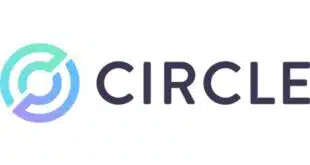Separate studies of online transaction fraud released this week cast new light on the problem of fraudulent Web transactions. The rate of online fraud is declining, according to a survey of online merchants conducted in October by CyberSource, Mountain View, Calif., a processor of online transactions. But indirect costs resulting from legitimate transactions rejected and the need to manually review suspicious traffic are getting worse. Web merchants expect to lose 1.7% of their revenue to fraud in 2003, down from 2.9% in a similar survey conducted a year ago, and far less than the 3.6% indicated in a 2000 survey. On average, one out of every 100 transactions is fraudulent. But for each fraudulent transaction, merchants reject up to four others because of suspicion of fraud. Merchants now subject one-fourth of online orders to costly manual review, with most of these turning out to be legitimate. These incidental labor and opportunity costs are becoming more severe as online transactions grow, according to the survey. Indeed, two-thirds of the merchants surveyed said online credit card fraud is now a serious or very serious business issue, compared to 47% last year, despite the drop in the rate of fraud. And the problem is likely to become particularly acute with the holiday shopping season looming, warns Austin, Texas-based ClearCommerce Corp., an online processor specializing in fraud detection and prevention that this week also released a study on online fraud. The CyberSource canvas showed nearly two-thirds of merchants are conducting manual reviews of fishy orders before accepting them, with 23% of all orders being subjected to such review; the corresponding numbers last year were 52% and 20%. At the same time, even though the fraud rate is declining, 58% of the merchants reported a direct fraud loss rate of 1% or more, including chargebacks and credits issued to avert chargebacks and possible penalties from the card networks for exceeding chargeback thresholds. The most common fraud-fighting tactic is address verification, with three-quarters of merchants reporting they use it. Manual review comes in second at 65%. In its study, ClearCommerce found address verification when used in isolation to be largely ineffective, with fraudulent, address-verified orders rising sharply because of identity theft. The technologies offered by the card companies–Verified by Visa and MasterCard's SecureCode–are used by a small minority of merchants, but roughly one-third of respondents in the CyberSource survey indicate they plan to implement either or both of these programs next year. These programs offer authentication by requiring consumers to enter a personal identification number when ordering online, but have been slow to catch on with merchants, who fear they create inconvenience for customers. Indeed, although 57% of merchants aware of Verified by Visa cited as very important the fact that it shifts fraud liability from the merchant to the card issuer, some 52% of all merchants expressing an opinion said the system “interferes” with the checkout process. In the survey, 333 merchants completed an online interview. Of the total survey sample, 47% were CyberSource clients.
Check Also
CompoSecure Partners With MoneyGram for Cross Border Traffic, While Circle Announces a Cross Border Platform
CompoSecure Inc., a provider of metal payment cards and security technology, is integrating its Arculus …





